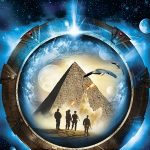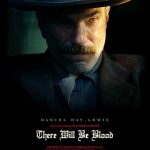The Crow (1994)
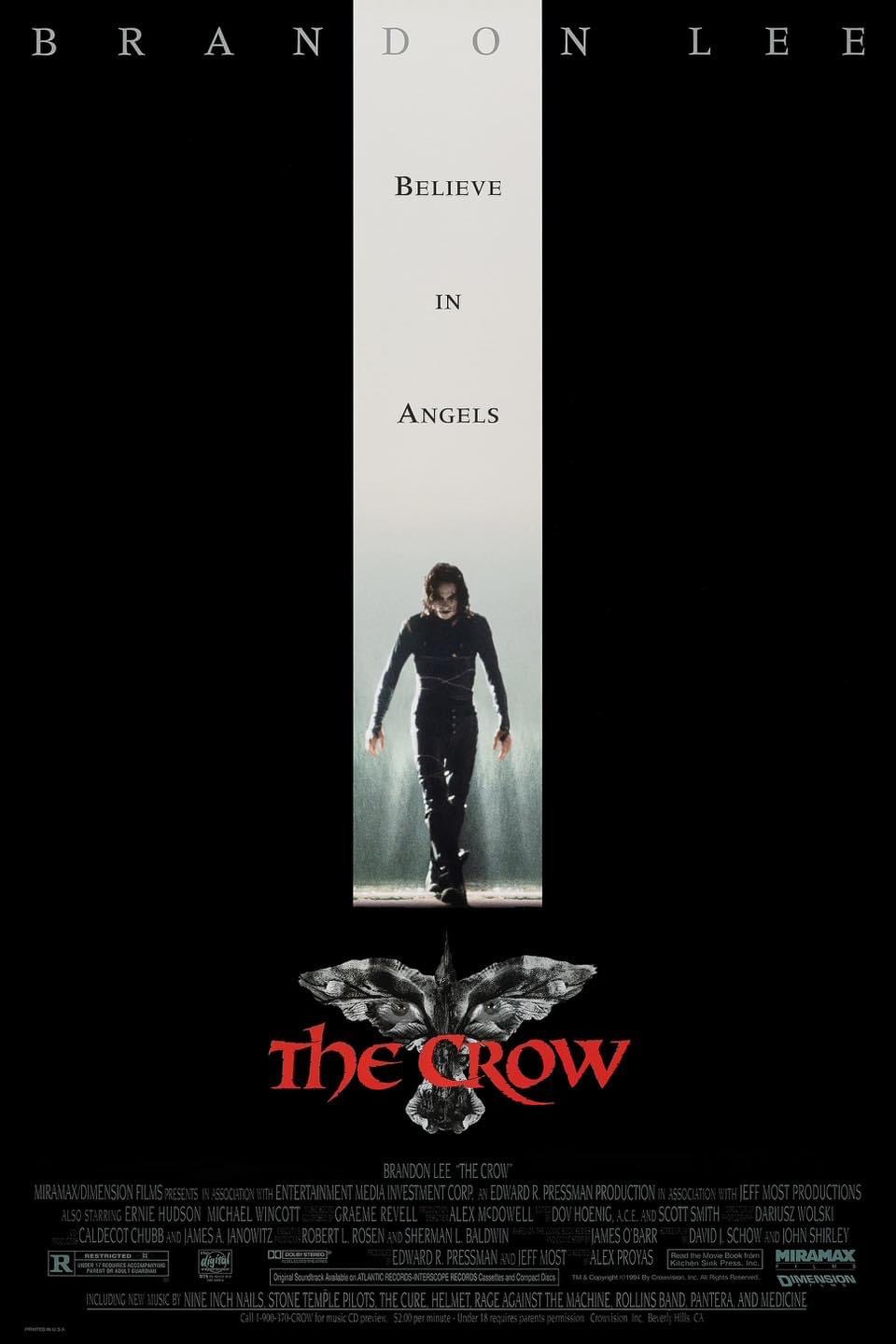
The Crow (1994), directed by Alex Proyas, is a dark, brooding, and atmospheric film that blends gothic aesthetics with elements of supernatural revenge. Based on the comic book by James O’Barr, the film has become a cult classic, largely due to its unique visual style, its tragic backstory involving the accidental death of lead actor Brandon Lee, and its haunting exploration of love, loss, and vengeance.
Suggested videos for you:
Plot Summary
The story centers on Eric Draven (played by Brandon Lee), a rock musician who, along with his fiancée Shelly (Sofia Shinas), is brutally murdered on Devil’s Night—an annual night of crime in the dystopian city they inhabit. One year after their deaths, Eric is resurrected by a mysterious crow, a symbol of the afterlife, and returns to the land of the living with one purpose: to exact revenge on the gang members who killed him and his fiancée.
As he embarks on a brutal campaign of vengeance, Eric is guided by the crow, which grants him supernatural powers of regeneration and strength. One by one, he hunts down the gang members responsible for his death, including their leader, Top Dollar (Michael Wincott), who orchestrated the violent attack. However, as Eric exacts his revenge, he also grapples with the emotional pain of losing his beloved Shelly, and his journey is as much about finding peace as it is about retribution.
Brandon Lee’s Performance and Tragic Legacy
Brandon Lee’s performance as Eric Draven is at the heart of The Crow, and it is impossible to discuss the film without acknowledging the tragic circumstances of his death during the film’s production. Lee died in a freak accident on set after being shot with a faulty prop gun, and the film was completed using body doubles and digital effects to fill in the gaps. His death cast a shadow over the film’s release, but it also gave his performance an almost mythic quality, with many viewers seeing Lee’s portrayal of Eric Draven as his final, haunting legacy.
Lee’s performance is both charismatic and emotionally resonant. He captures the intense sorrow and rage that drives Eric’s quest for revenge, but he also brings a sense of vulnerability and tragic depth to the character. Despite the violence he metes out, Eric is not a heartless killer—he is a man in pain, seeking justice for the woman he loved. Lee brings a sense of humanity to a role that could have easily been one-dimensional, making Eric Draven one of the most memorable antiheroes in cinematic history.
Direction and Cinematography
Alex Proyas’ direction is one of the film’s standout elements. He creates a dark, atmospheric world that is equal parts gothic and dystopian, heavily influenced by the visuals of film noir and German expressionism. The city Eric inhabits is drenched in perpetual rain, neon lights, and shadows, giving it an oppressive, nightmarish quality. The urban landscape, with its crumbling buildings, graffiti-covered walls, and constant sense of decay, mirrors the internal turmoil of its protagonist.
The use of color in The Crow is particularly striking. The film’s palette is dominated by shades of black, grey, and deep red, emphasizing its gothic tone and the grim nature of Eric’s mission. However, there are moments where the film’s color scheme shifts, particularly in the flashbacks to Eric’s life with Shelly, where the lighting becomes warmer and softer, providing a stark contrast to the dark, cold present. These visual shifts enhance the film’s emotional core, reminding the audience of the love and light that was lost, making Eric’s quest for vengeance more poignant.
Dariusz Wolski’s cinematography is a key part of the film’s aesthetic, using moody lighting, sweeping camera movements, and dynamic action sequences to create a visual experience that feels like a living graphic novel. The scenes of Eric leaping across rooftops or walking through the rain-soaked streets with his iconic black leather coat and white face paint are some of the most iconic images of 1990s cinema.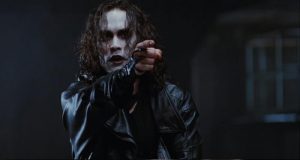
Themes of Love, Loss, and Revenge
At its core, The Crow is a story about love, loss, and the devastating emotional toll of grief. Eric’s resurrection and quest for revenge are driven by his overwhelming sense of loss and his desire to right the wrongs done to him and Shelly. The film taps into the idea of love transcending death, as Eric’s bond with Shelly is so strong that it literally pulls him back from the grave. His need to avenge her death is not just about punishing those responsible, but about finding peace for both himself and her.
The film also explores the consequences of violence and revenge. While Eric’s mission is justified in the sense that he is seeking justice for a terrible wrong, the violence he inflicts on his enemies is brutal and relentless. The film does not shy away from depicting the toll this takes on Eric, both physically and emotionally. As much as Eric is a supernatural avenger, he is also a man consumed by his pain, and the film raises questions about whether revenge truly brings closure or simply perpetuates a cycle of violence.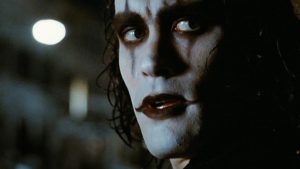
Supporting Cast and Characters
While Brandon Lee’s performance is the centerpiece of the film, the supporting cast also adds depth to the story. Michael Wincott’s portrayal of the villain Top Dollar is chilling and charismatic. He brings a certain theatricality to the role, making Top Dollar a memorable antagonist who revels in chaos and destruction. Wincott’s gravelly voice and sinister presence make him a formidable counterpoint to Eric’s somber and tragic demeanor.
Rochelle Davis plays Sarah, a young girl who was close to Eric and Shelly before their deaths. She serves as a grounding force for Eric, reminding him of his humanity and the life he lost. Ernie Hudson also delivers a strong performance as Sergeant Albrecht, a sympathetic police officer who becomes an ally to Eric as he seeks justice. Their interactions provide some of the film’s more poignant moments, as Albrecht represents a figure of compassion in a world full of corruption and violence.
Music and Soundtrack
The film’s soundtrack is another element that has contributed to its lasting legacy. Featuring a mix of alternative rock, industrial, and gothic music, the soundtrack perfectly complements the film’s dark, gritty atmosphere. Bands like The Cure, Nine Inch Nails, Stone Temple Pilots, and Rage Against the Machine contribute to the film’s edgy, rebellious tone, while Graeme Revell’s haunting score underscores the film’s more emotional moments.
The music not only enhances the film’s mood but also serves as a reflection of Eric’s character—raw, intense, and filled with both anger and melancholy. The soundtrack became a major success in its own right, helping to cement The Crow as a touchstone of 1990s counterculture.
Legacy and Impact
The Crow has left an indelible mark on popular culture, particularly within the gothic and alternative scenes. Its dark aesthetic, tragic romance, and themes of vengeance have resonated with audiences for decades, and the film continues to be celebrated for its visual style and emotional depth. It is also remembered as a turning point in comic book adaptations, proving that films based on graphic novels could be serious, dark, and artistically ambitious.
Brandon Lee’s untimely death has become inseparable from the film’s legacy, adding a layer of tragedy that mirrors the themes of the story itself. His portrayal of Eric Draven has been immortalized, and The Crow remains a tribute to his talent and potential as an actor.
Conclusion
The Crow (1994) is a visually stunning and emotionally resonant film that explores the depths of love, loss, and revenge. With its iconic performance from Brandon Lee, its gothic visual style, and its haunting soundtrack, the film has earned its place as a cult classic. While it is a tale of vengeance, it is also a story about the enduring power of love and the painful consequences of violence. Even decades after its release, The Crow continues to captivate audiences with its dark beauty and tragic poignancy.


